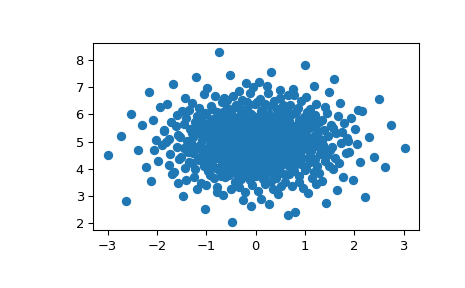scipy.stats.qmc.MultivariateNormalQMC¶
- class scipy.stats.qmc.MultivariateNormalQMC(mean, cov=None, *, cov_root=None, inv_transform=True, engine=None, seed=None)[source]¶
QMC sampling from a multivariate Normal \(N(\mu, \Sigma)\).
- Parameters
- meanarray_like (d,)
The mean vector. Where
dis the dimension.- covarray_like (d, d), optional
The covariance matrix. If omitted, use cov_root instead. If both cov and cov_root are omitted, use the identity matrix.
- cov_rootarray_like (d, d’), optional
A root decomposition of the covariance matrix, where
d'may be less thandif the covariance is not full rank. If omitted, use cov.- inv_transformbool, optional
If True, use inverse transform instead of Box-Muller. Default is True.
- engineQMCEngine, optional
Quasi-Monte Carlo engine sampler. If None,
Sobolis used.- seed{None, int,
numpy.random.Generator}, optional If seed is None the
numpy.random.Generatorsingleton is used. If seed is an int, a newGeneratorinstance is used, seeded with seed. If seed is already aGeneratorinstance then that instance is used.
Examples
>>> import matplotlib.pyplot as plt >>> from scipy.stats import qmc >>> engine = qmc.MultivariateNormalQMC(mean=[0, 5], cov=[[1, 0], [0, 1]]) >>> sample = engine.random(512) >>> _ = plt.scatter(sample[:, 0], sample[:, 1]) >>> plt.show()

Methods
fast_forward(n)Fast-forward the sequence by n positions.
random([n])Draw n QMC samples from the multivariate Normal.
reset()Reset the engine to base state.